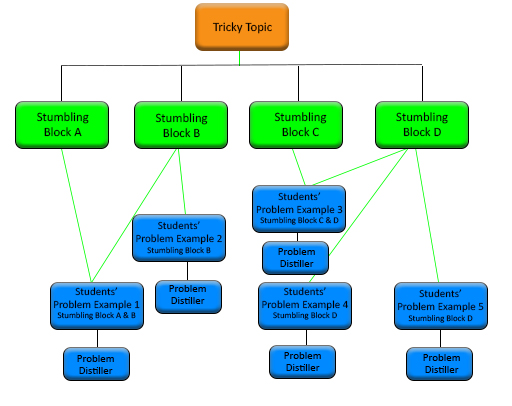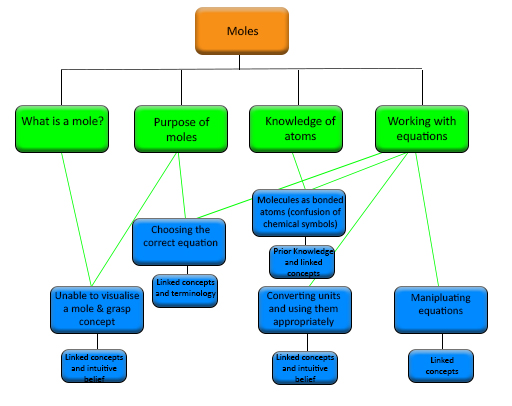3.2 Problem distiller
These categories have been compressed into a table called the problem distiller (see Table 4). The problem distiller helps drill down to the reasons that underpin a student’s misconception which, later on, helps guide the development of an effective teaching intervention.
| Categories | Explanations for lack of understanding of new knowledge |
|---|---|
| 1) Incomplete or flawed prior knowledge | a) Prior underpinning knowledge, assumed to be known, is missing or incomplete. |
| b) Prior underpinning knowledge is flawed and may need to be ‘unlearned’ to allow new knowledge to be acceptable. | |
| 2) Lack of linked concepts | a) There is a misunderstanding of linked concepts so new knowledge appears confusing. |
| b) Complementary concepts, learnt at the same time for cohesion, are not linked or not taught so new knowledge appears alien. | |
| 3) Terminology | a) Word, phrase or symbol is alien, vague or complex. |
| b) Multiple meanings for same word, phrase or symbol. | |
| c) Multiple words, phrases or symbols with similar meaning. | |
| 4) Intuitive belief | a) New knowledge contradicts commonly held ‘truths’ or misconceptions. |
| b) Real-life analogy is too simplistic or just wrong. | |
| c) Flawed causal reasoning. | |
| d) No immediate real-life analogy. |
The problem distiller can be used to classify students’ problem examples. For example, ‘birds have wings therefore all creatures with wings are birds’ is an intuitive belief because it could be classified as 4c (flawed causal reasoning). Some students’ misunderstandings will have more than one classification. For example ‘fire is alive’ will be ‘intuitive belief’ and ‘lack of linked sub-concepts’ as it would be classed under 4a) as this is a ‘truth’ and 2a) or 2b) as the student may not know or understand the definition of ‘living’.
This adds one more level to our structure of tricky topics. See Figure 8.
Activity 2 Categorising students’ misunderstandings
Look back at the example tricky topic of moles in Figure 3. Using the problem distiller (in Table 4) can you think of reasons why the five problem examples may be problems?
From what you have seen so far the relationship between stumbling blocks and their problem examples may seem quite straight forward. However, that is not always the case. As you saw with the living things (Activity 1) there are many ways to group items, which will depend on your perspective and the definition you seek. The key thing about stumbling blocks is that they are common to many problem examples and are assessable. However, the process of definition is recursive and a problem example may become a stumbling block for a different set of students and similarly a stumbling block may become a tricky topic, depending on the level required.


